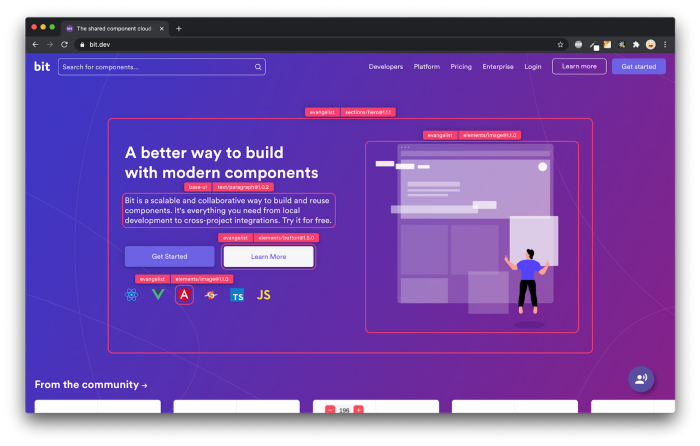This content originally appeared on Bits and Pieces - Medium and was authored by Madhumitha Sri Baskaran
Keep these limitations in mind before considering JavaScript for your next project.

JavaScript is one of the most popular programming languages in the world, running on almost every client and server application. However, despite its immense popularity and acceptance in the industry, there are some crucial limitations in the language that can drastically impact its usability.
In this article, we will guide you through the limitations of JavaScript that every developer should know so that you can determine its feasibility for your next project.
1. Lack of multi-threading
JavaScript is a single-threaded language, only one piece of code can be run simultaneously. Although contemporary browsers and Node.js have introduced Web Workers and Worker Threads, developers can now run JavaScript code concurrently on different threads.
Scripts can run independently in the background using Web Workers, allowing for simultaneous task processing without obstructing the user interface or other program components. These workers are often utilized for complex computations, data processing, and network connectivity.
Conversely, Node.js offers Worker Threads, which offer similar parallel processing capabilities. They allow programmers to run JavaScript code on different threads, giving them a technique to make better use of many CPU cores.
While Web Workers and Worker Threads enable developers to execute parallel processing tasks, JavaScript is still fundamentally a single-threaded language. This can help web apps and server-side JavaScript applications perform better.
2. Limitations on large numbers.
JavaScript can handle huge numbers, and its precision in representing numbers has several restrictions. IEEE 754, which establishes a constant length for representing numbers, integers, and decimals, is the standard JavaScript uses. Typically, this fixed length is 64 bits, which reduces the precision of the numbers that can be represented.
However, a built-in object named BigInt in JavaScript enables programmers to represent numbers of any length. BigInt can represent integers of any size and do not have the same precision restrictions as regular JavaScript numbers.
For illustration, the following is how to generate a BigInt in JavaScript:
const bigNum = BigInt("1234567890123456789012345678901234567890");You can do mathematical operations with BigInt in the same way that you would with conventional numbers:
const bigNum1 = BigInt("1234567890123456789012345678901234567890");
const bigNum2 = BigInt("9876543210987654321098765432109876543210");
const result = bigNum1 * bigNum2;
console.log(result); // Output: 12193263113702179554494795670729605048032737609439226880154212900nBigInt offers a mechanism to work with arbitrarily large integers in JavaScript, even though they can be slower to process than regular JavaScript numbers.
3. Lack of read/write capabilities on client-side
In general, it is true that client-side JavaScript executing in a web browser lacks direct access to the file system and cannot read or write files on the user’s machine. This is because web browsers have security features that prevent websites from accessing files on users’ computers without their express permission.
However, there are some indirect methods for client-side JavaScript to interact with files, including:
- By utilizing an element with the type=”file” attribute, JavaScript can retrieve files that the user has selected using the HTML5 File API. The File API offers ways to access these files’ contents and carry out actions on them, such as uploading them to a server.
- Employing client-side web storage Using web storage APIs like localStorage and sessionStorage, JavaScript can save data on the user’s machine. These APIs can be used to store data durably or temporarily, even though they do not permit direct file access.
- Utilizing third-party APIs: Client-side JavaScript can use third-party APIs that offer file storage and access features. Dropbox, Google Drive, and Amazon S3 are a few examples.
Nonetheless, there are ways to work with files indirectly or through third-party services, even though client-side JavaScript cannot read or write files directly on the user’s machine.
4. No support for networking
The assertion that JavaScript lacks networking functionality is untrue. JavaScript has a wide range of networking capabilities thanks to the XMLHttpRequest (XHR) object, which enables client-side JavaScript to interact with servers via HTTP requests.
Since Internet Explorer 5 was introduced, every web browser has supported the XMLHttpRequest object. It offers a mechanism for JavaScript running on the client to submit HTTP requests to a server, such as filling out forms or obtaining data from a server.
Moreover, Node.js gives server-side JavaScript a robust set of networking features, including integrated support for setting up and maintaining network sockets, sending HTTP requests, and setting up web servers. Node.js includes a robust ecosystem of modules that offer extra networking features like email sending, WebSocket handling, and database communication.
JavaScript’s networking capabilities are adequate for most web-based applications and services, even though other programming languages, such as.NET, and Java, also have excellent networking support.
5. Lack of multiple inheritance
Unlike several other programming languages, notably C#, JavaScript does not support multiple inheritance in the conventional sense. A class can inherit from several parent classes, merging the characteristics of both parent classes into a single-child class. This is known as multiple inheritance.
Prototypal inheritance allows objects to take properties and methods from their prototype object, which is how inheritance is accomplished in JavaScript. Although JavaScript does not support multiple inheritance in the conventional sense, there are still several techniques to implement similar functionality:
- Mix-ins: Without utilizing inheritance, mix-ins allow a class to gain functionality. You may “mix-in”, a collection of defined attributes and methods to a class using mix-ins. This enables a class to incorporate numerous mix-ins’ capabilities, achieving functionality comparable to multiple inheritance.
- Composition: Composition is the process of building a new class from instances of existing classes, allowing the new class to inherit the attributes and functions of the existing classes. It is possible to achieve functionality through a composition equivalent to multiple inheritance.
- Interfaces: Interfaces specify a set of operations that a class must support. Although interfaces are not the same as multiple inheritance, they can be used to mix functionality from many classes by providing a set of methods that must be implemented.
Although JavaScript does not offer multiple inheritance in the conventional sense, mix-ins, composition, and interfaces can all be used to implement equivalent functionality.
Wrapping Up
The more you comprehend JavaScript’s workings and failings, the more solid your code will be and the more you’ll be able to use the language’s full potential. Contrarily, many JavaScript issues are caused by a need for a proper understanding of JavaScript paradigms and concepts.
The best way to increase your productivity and proficiency in a language is to become intimately familiar with its intricacies and peculiarities.
💡 Tip: JavaScript development becomes more streamlined, if you use an open-source toolchain such as Bit, With Bit, any JavaScript code you write can be shared as utility functions between apps. This way, you’ll have independent versioning, tests, and documentation for them too, making it easier for you to use them for all your projects.
Learn more here:
Sharing JavaScript Utility Functions Across Projects
The information presented in this article helps you understand JS and its limitations.
Thank you for reading.
Build Apps with reusable components, just like Lego

Bit’s open-source tool help 250,000+ devs to build apps with components.
Turn any UI, feature, or page into a reusable component — and share it across your applications. It’s easier to collaborate and build faster.
Split apps into components to make app development easier, and enjoy the best experience for the workflows you want:
→ Micro-Frontends
→ Design System
→ Code-Sharing and reuse
→ Monorepo
Learn more:
- Creating a Developer Website with Bit components
- How We Build Micro Frontends
- How we Build a Component Design System
- How to reuse React components across your projects
- 5 Ways to Build a React Monorepo
- How to Create a Composable React App with Bit
- How to Reuse and Share React Components in 2023: A Step-by-Step Guide
- Writing Clean Code in JavaScript
- 5 JavaScript Data Grid Libraries Every Developer Should Know
- 5 Express Middleware Libraries Every Developer Should Know
- SOLID Principles every Developer Should Know
- 4 Programming Paradigms Every Developer Should Know
- Improve React Component Maintainability with Layered Architecture
- Difference Between Design Tokens and Design Variables in CSS
- The Difference Between Type Aliases and Interfaces in TypeScript
5 Fundamental Limits in JavaScript Every Developer Should Know was originally published in Bits and Pieces on Medium, where people are continuing the conversation by highlighting and responding to this story.
This content originally appeared on Bits and Pieces - Medium and was authored by Madhumitha Sri Baskaran
Madhumitha Sri Baskaran | Sciencx (2023-04-20T06:02:14+00:00) 5 Fundamental Limits in JavaScript Every Developer Should Know. Retrieved from https://www.scien.cx/2023/04/20/5-fundamental-limits-in-javascript-every-developer-should-know/
Please log in to upload a file.
There are no updates yet.
Click the Upload button above to add an update.
